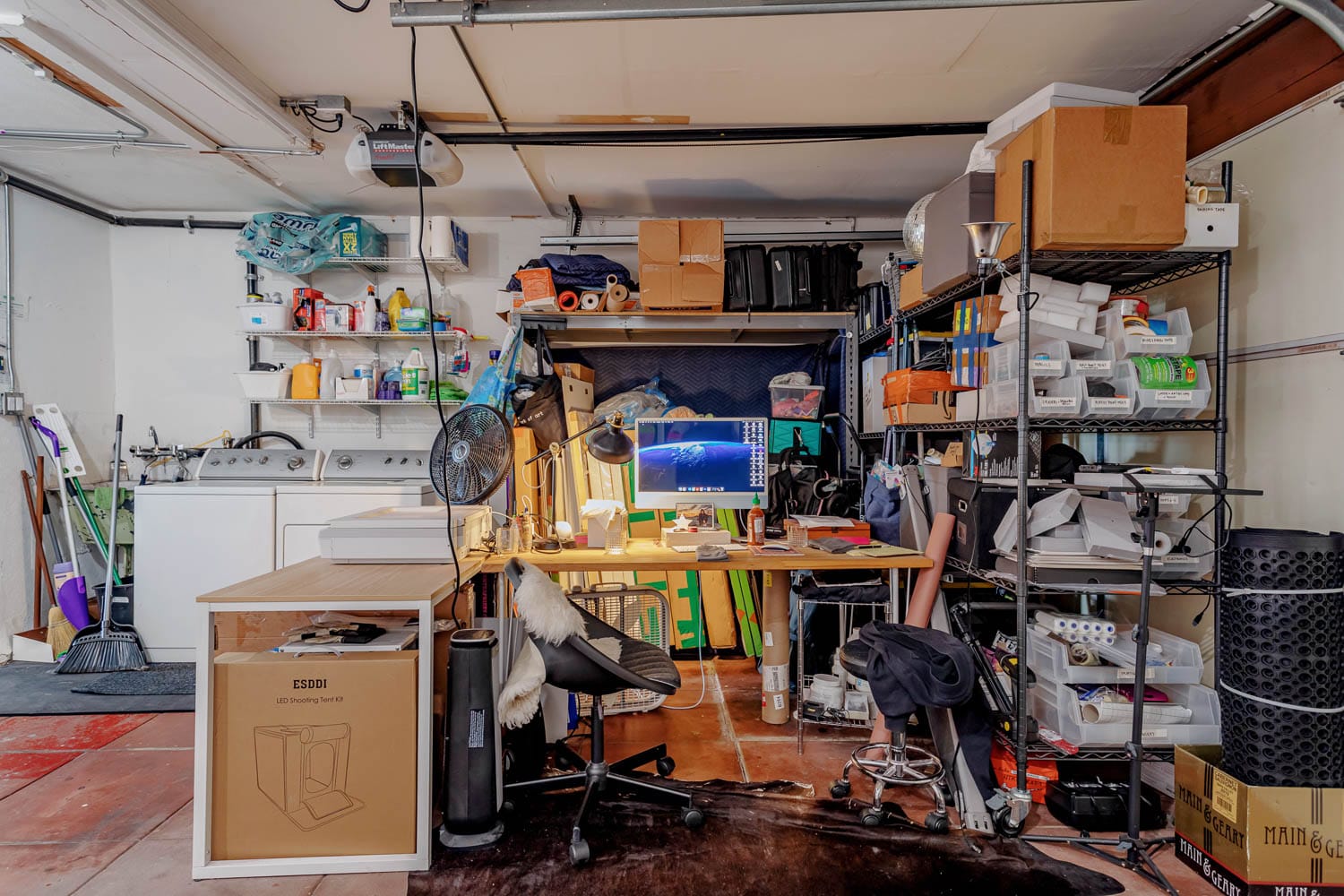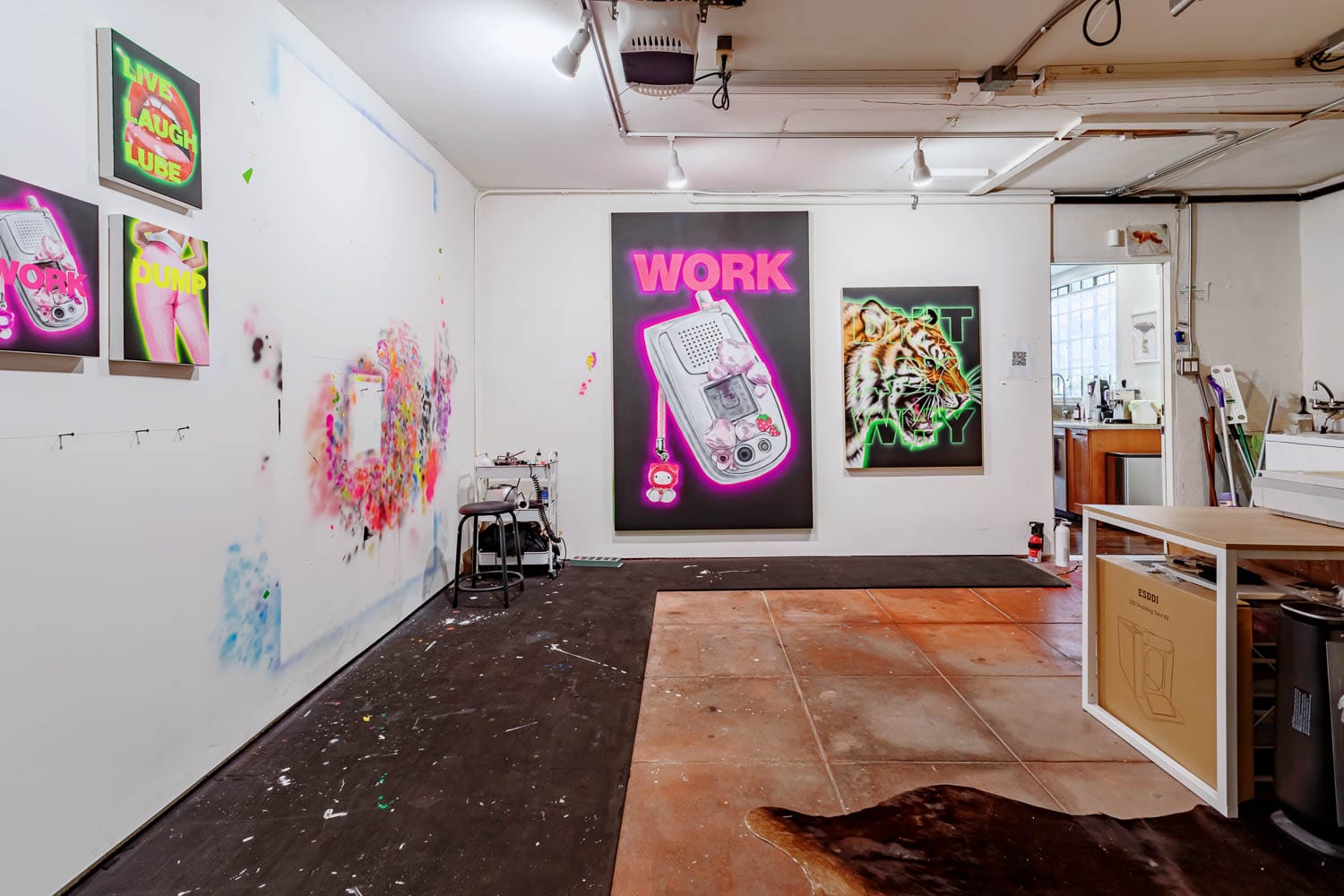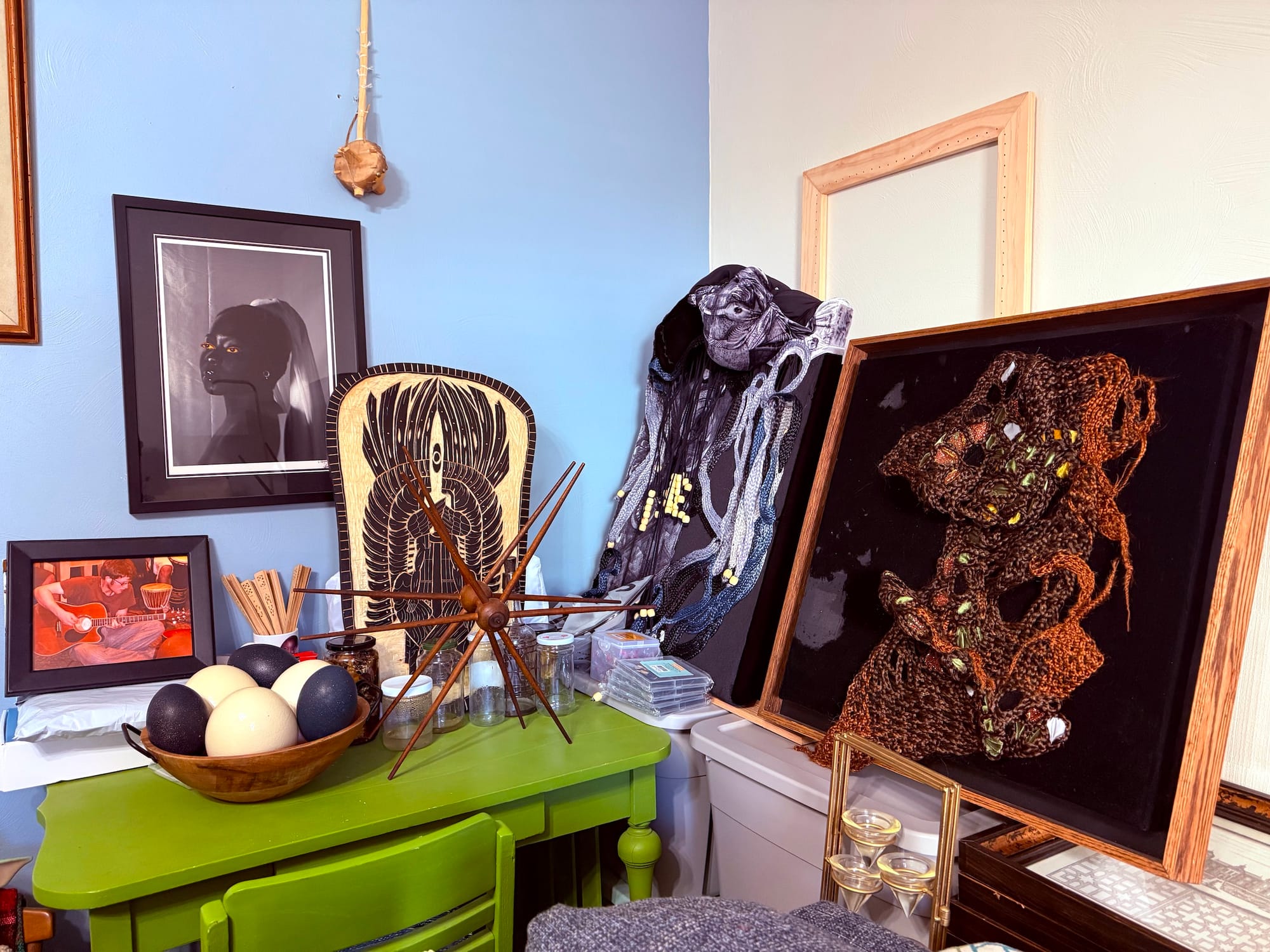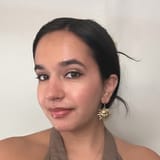A View From the Easel
“I feel so safe and unselfconscious here in my garage studio.”
Welcome to the 313th installment of A View From the Easel, a series in which artists reflect on their workspace. This week, artists paint to the sounds of washing machines and commune with ancestors while they work.
Want to take part? Check out our submission guidelines and share a bit about your studio with us through this form! All mediums and workspaces are welcome, including your home studio.
Mieke Marple, Los Angeles, California

How long have you been working in this space?
My garage? Since right before my daughter was born, so almost three years.
Describe an average day in your studio.
It looks like me doing laundry while masking off a painting or running the dishwasher while airbrushing some final painting details. My art-making windows are small because I also work three part-time jobs and watch my daughter. So it’s an hour here, 45 minutes there, maybe another 30 minutes at night. But the time adds up, since I try to write or make art every day. I listen to electronic music, or NPR, or sometimes audiobooks (most recently Elizabeth Gilbert’s All the Way to the River), almost always coupled with the loud thrum of the washing machine and dryer.
How does the space affect your work?
I feel so safe and unselfconscious here in my garage studio that it’s allowed me to take risks in my art practice without fear. Previously, my studio was in a big building with over 60 artists and I felt self-conscious there for no good reason … It wasn’t like I left my door open, but simply being near other artists made me jumpy because I am a sensitive and neurotic bird.
How do you interact with the environment outside your studio?
I am very connected to the Silverlake neighborhood where I live and work. I can be found at the local playground four or five days a week. I don’t drink, but it’s the equivalent of a Cheers bar where everyone knows my name. I’ve met and befriended a lot of talented creatives, such as artist Alex Olson and filmmaker Aemelia Scott, just by hanging out at the playground for hours with my daughter.
What do you love about your studio?
That I can pop out and see my family for five seconds at any given time before going back to work.

What do you wish were different?
I wish it were bigger, had natural light, and that I wasn’t always doing laundry. For the first two years of my garage studio, I didn’t have anyone over because I was embarrassed about the washer and dryer and all the storage racks next to my art. Then, I got over that and started to love inviting people over. Still, I wish it didn’t double as my family’s storage space. My husband is always tossing empty Amazon boxes into the garage as if the garage weren’t my TEMPLE OF CREATIVITY … My dream situation would be to buy another house or storefront nearby, a five-minute walk away, and have that as my studio. Is that too lofty? I hope not.
What is your favorite local museum?
LACMA, not exactly an underdog museum, but that’s okay.
What is your favorite art material to work with?
Fluorescent paint. I love it!
Akudzwe Elsie Chiwa, Pittsburgh, Pennsylvania

How long have you been working in this space?
I have been working in this space for over a year. It is my home studio. I carved out a portion of our lounge to turn into my studio.
Describe an average day in your studio.
My work schedule is eclectic. I work a 9-to-5 job and I try to dedicate an hour after work, and the weekends when I am free. I normally work from the couch, and sometimes I take my work up to the room and watch a show or movie I have watched before as the background sound. When I am really in the zone, I like to listen to music, and sometimes I work in silence so I can hear the work speaking to me better. I generally work on several projects at the same time, so as to encourage fluidity amongst or between the works.
How does the space affect your work?
A lot of my work delves into the intersectionality of the home-space when it comes to femininity and Afro-feminism and the stories of womanhood and girlhood. The home-space is a site of memory and excavation. To be able to create the work at home builds into the themes, the storytelling, the materiality, and the intimacy it takes to tell and create stories through art.
How do you interact with the environment outside your studio?
I haven't been able to interact with the external environment as much as I want to. When I get into the process of making the work, I enter into a bubble of isolation, where I commune with my feminine ancestors. This is to ensure that the work stays true to their stories and desires as well as their purpose. I connect to the greater Pittsburgh Black community, as these stories are about the lost and forgotten histories of southern Africa, and by extension, Black identities before, during, and after the colonial and Civil Rights era. As a Zimbabwean-American who comes from a culture of humanism and connection, it is important that my work connects to the people who exist within its sphere of inception.
What do you love about your studio?
I love that it's home, that I can wake up in the middle of the night and make art. It's convenient for me. It's colorful and offers me exactly what I need to do the work I need to make.
What do you wish were different?
I wish I could have more space. Another room in the house or an external studio, so I can work on bigger projects or use materials that need better ventilation.
What is your favorite local museum?
August Wilson African American Cultural Center.
What is your favorite art material to work with?
It's hard to choose. I love fibers and beads.





